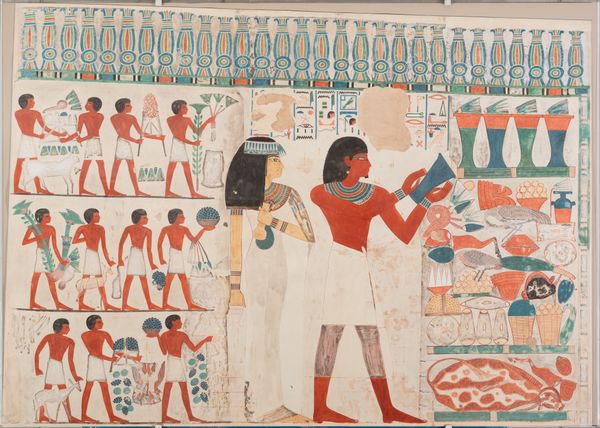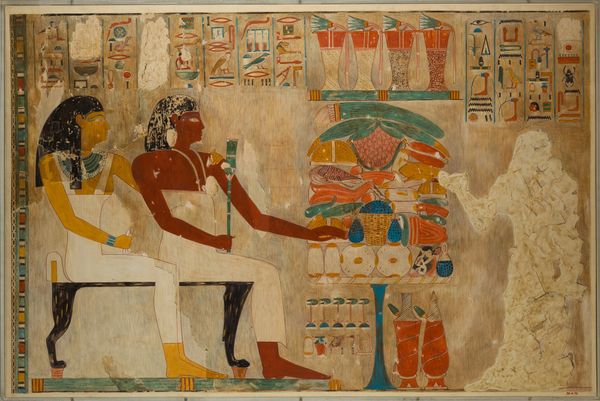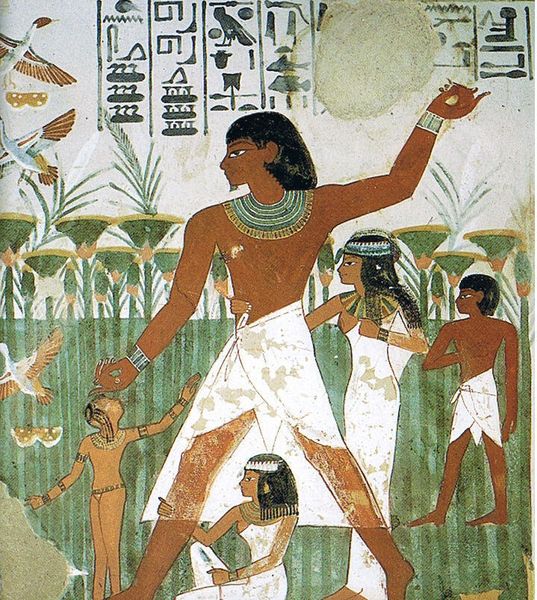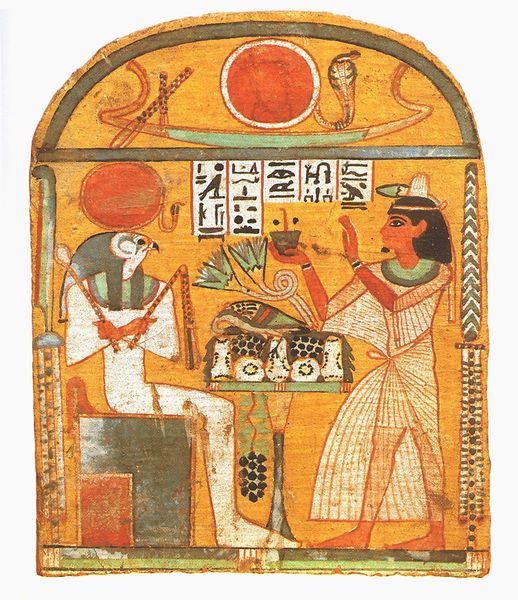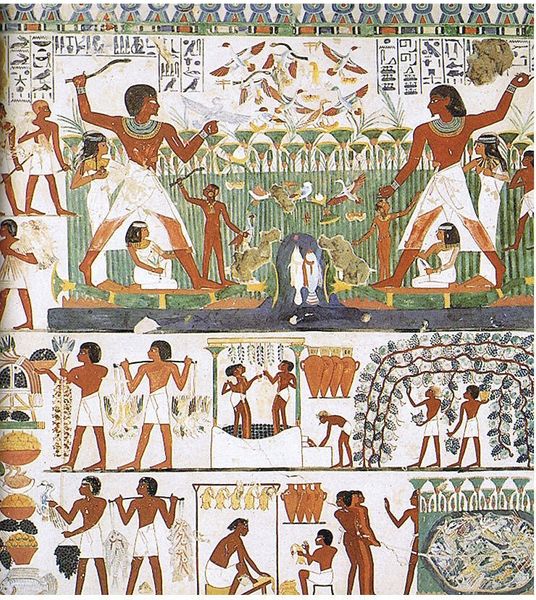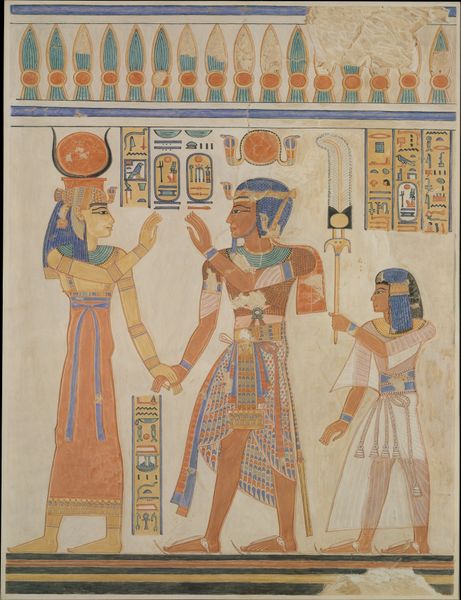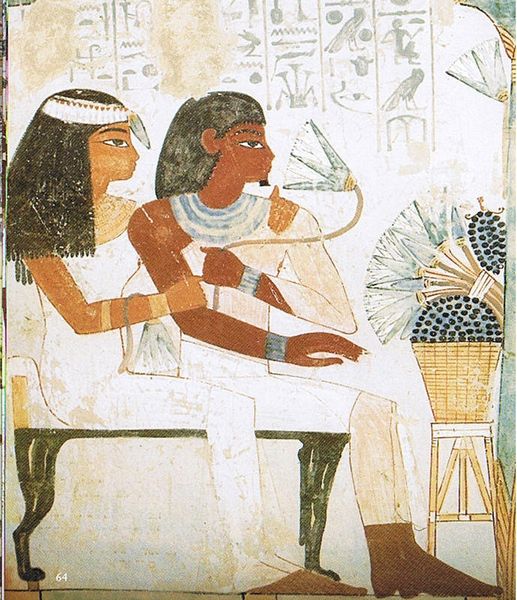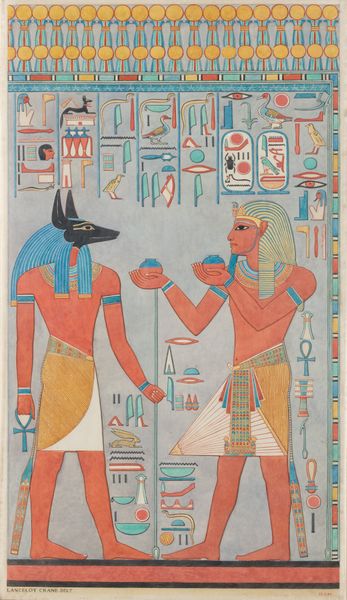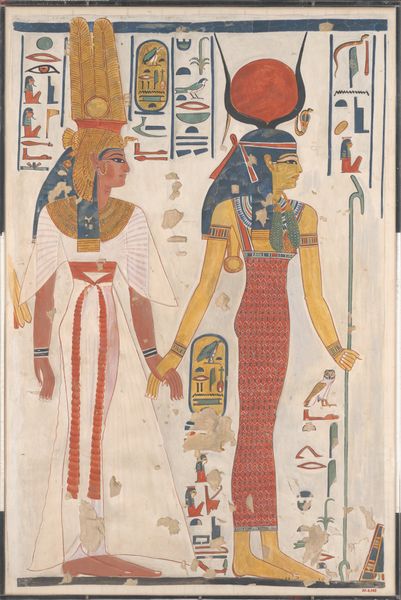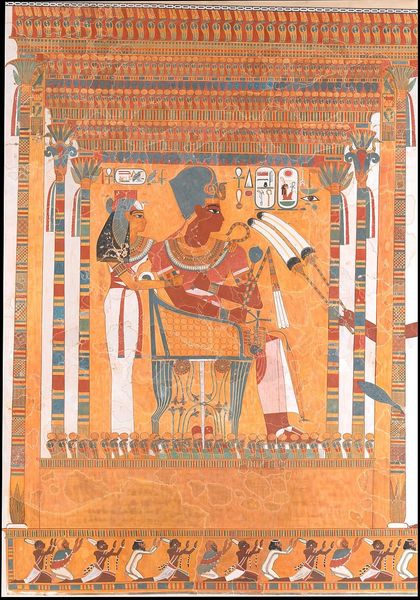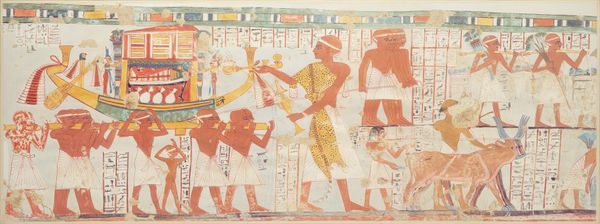
painting, fresco
#
portrait
#
narrative-art
#
painting
#
ancient-egyptian-art
#
perspective
#
figuration
#
fresco
#
ancient-mediterranean
#
history-painting
#
academic-art
#
miniature
Copyright: Public domain
Curator: I find this ancient Egyptian fresco titled "Nacht Und Taui Opfern," dating back to approximately 1390 BC, quite compelling in its depiction of ritual offering. There’s a stillness and formality, despite its rather humble presentation. Editor: Immediately striking, isn't it? The precision and order feel very calculated. And, there's something both serene and almost melancholic about the piece. It’s more than just documentation, there’s an air of… duty, maybe. Curator: Indeed. The composition reveals much about Egyptian social and religious structures. Consider the subjects’ stances – reserved and perhaps iconic in their depiction. Editor: And the placement of the figures within that shelf space packed with provisions. Does this tell us something about who could afford these artworks, or about their intended audience? Did such imagery play a role in legitimizing wealth and class? Curator: Almost certainly. The offering scene carries symbolic weight. Consider the positioning of the offerings themselves. Each food item likely represents sustenance, renewal, the provision for afterlife. What resonates with you in this symbolism? Editor: The repetition draws me in. Notice the stacks and arrangements. Everything is ordered according to ancient pictorial traditions. What I find very interesting is that we see these frescoes inside the graves of officials. So, perhaps this isn’t art meant for the wider population, but exclusively aimed at securing comfort in the afterlife? It highlights the strong sense of cultural continuity that art was trying to evoke back then. Curator: I would agree. The continuity is intentional. It solidifies beliefs and practices across generations and, presumably, into eternity. As a representation of cultural and religious values, this fresco is a powerful reminder of the elaborate belief system. It evokes the psychological certainty these images must have offered. Editor: Well, on reflecting on the history and symbolism woven into it, it provides insights into the values and priorities that guided one of the oldest known cultures. The piece prompts important questions about the intersection of wealth, power, art, and social beliefs. Curator: I completely concur. Studying these ancient works certainly inspires me to reconsider visual symbols and cultural inheritance through art, while revealing lasting themes.
Comments
No comments
Be the first to comment and join the conversation on the ultimate creative platform.

